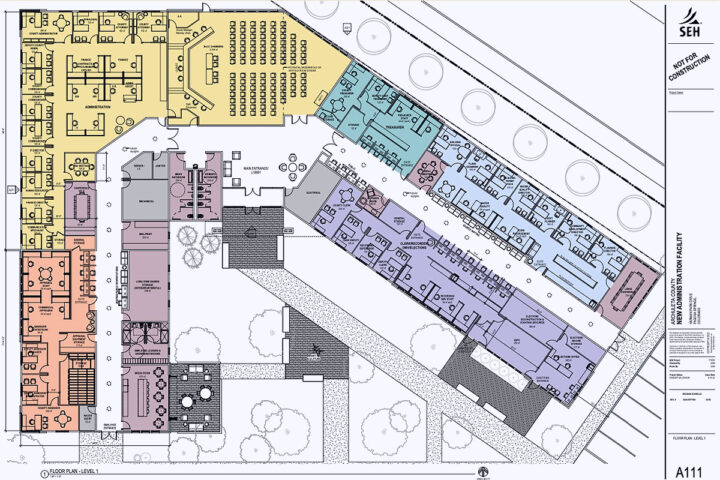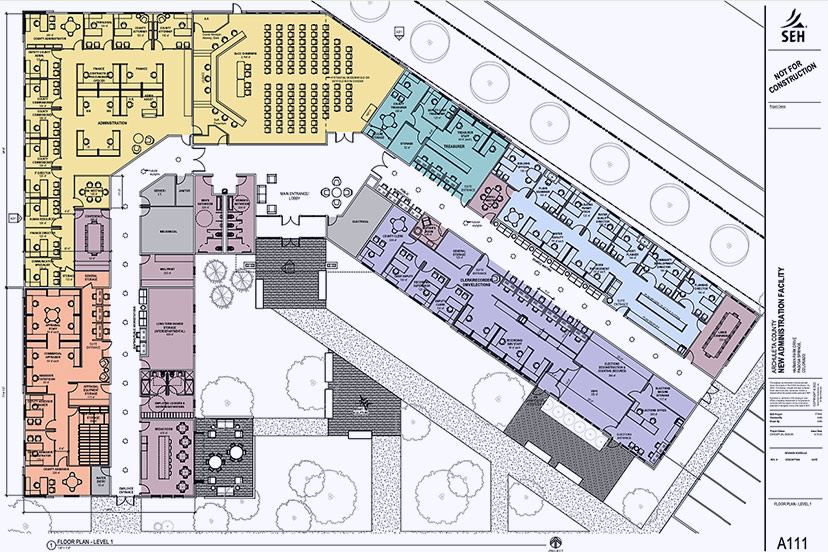As we move into ‘budget season’, the conversations at local government meetings begin to focus on how much money our elected and appointed officials think they will have available to spend, come 2024.
And, in some cases, how to spend money they don’t have.
The creation of annual government budgets is, legally, a public process in Colorado, to be performed in open meetings and with an allowance for public input. In my experience — speaking as someone who has been observing budget processes fairly closely for the past 18 years in Archuleta County — the public generally takes very little interest in budget creation and approval.
Like, none at all. Generally.
Even though the money is our money, and the funding decisions directly effect us — and define what services we will or will not receive in the coming year — the budgeting process simply doesn’t attract much interest from the public.
Our government leaders are not to blame for this lack of interest, although they probably find it convenient to make their budget decisions without the public looking over their shoulders.
I would venture to suggest that annual budgets are some of the most complicated documents produced by local government officials, and we — ordinary folks with ordinary lives — prefer to avoid complicated documents.
With that said, I will try and make this editorial series as simple and readable as possible.
The lion’s share of annual revenues, for local governments, are provided by local taxes. Here in Colorado, generally speaking, local governments are legally prohibited from spending money they don’t have, by creating public debt — unless the voters approve the debt in advance. This prohibition has been written into the Colorado Constitution since it was approved by Colorado voters in 1876.
Section 6. LOCAL GOVERNMENT DEBT
(1) No political subdivision of the state shall contract any general obligation debt by loan in any form, whether individually or by contract pursuant to article XIV, section 18 (2)(a) of this constitution… unless the question of incurring the same be submitted to and approved by a majority of the qualified taxpaying electors voting thereon, as the term “qualified taxpaying elector” shall be defined by statute.
Americans are accustomed to the idea of governments going deeply into debt, because our federal government has no legal restrictions in that regard, other than their voluntary, self-imposed ‘debt ceiling’… a ‘ceiling’ which functions rather more like a ‘staircase’.
But the folks who wrote the Colorado Constitution specifically required the taxpayers to approve any public debt.
In theory.
The Archuleta County government — along with many other Colorado governments, including the Town of Pagosa Springs — has figured out ways to get around that limitation, when it comes to building new facilities desired by the elected leaders.
The basic technique is called “Lease Purchase” and it was used by the Archuleta Board of County Commissioners to build the new County Detention Center in Harman Park, after the voters refused — twice — to fund the debt. The BOCC signed a contract with some wealthy investors, who funded the jail construction with a ‘handshake’ promise that the County would continue to ‘lease’ the facility, until the construction cost was repaid. Plus a generous amount of interest paid, of course.
The Town government used the same technique to build its shiny new Maintenance Facility near Yamaguchi Park. They didn’t even bother asking the taxpayers to vote; they simply assumed the debt would be rejected, apparently.
Then — if I recall correctly — the County built a new County Courthouse, using the same funding technique.
The main problem with this technique is not legal but financial. When the voters approve a new facility debt, they simultaneously agree to an increased tax to fund the debt. The government must then use those increased taxes only to pay off the debt.
With a Lease Purchase arrangement, the government gets no additional revenues to pay for the debt. So the money for the Lease comes out of other public needs. Like, for example, out of road maintenance. (As has happened with Archuleta County.)
But the Archuleta commissioners is not satisfied with a new ‘Lease-Purchase-funded’ jail and courthouse that essentially belong to wealthy investors. The commissioners want more facilities.
It appears that the next new County facility will be a bus facility, also at Harman Park. But this facility will be paid for almost entirely through federal and state grants obtained by former County Transportation Director Laura Vanoni. As far as I can tell, no long-term debt or ‘lease’ will be created by this new facility. That is to say, the facility will belong to the taxpayers, not to wealthy investors.
But the BOCC did not learn a lesson, however valuable, from watching how a bus facility gets funded through grants. At their August 15 BOCC meeting, the commissioners approved a plan to begin what appears to be another ‘Lease Purchase’ scheme.
Here’s the new Administration Building that our current BOCC wants to build via “Lease Purchase.” (You will not get a vote.)

You can download the preliminary Lease Purchase agreement here. (Large file.)
The plan, still in a preliminary state, is to hire Wesley Properties LLC (or maybe Wesley Development LLC) to construct a 25,000 square-foot Administration Building, on behalf of the ‘Lease Holder’, Geneva Investments, who will lease the building to Archuleta County for 20 years at a lease cost of $600,000 a year, with the rent to increase by 1.5% per year. (Thus, a 30% increase over 20 years, resulting in a final annual payment of more than $780,000.)
So then, total ‘Lease’ payments amounting to maybe $13 million over 20 years?
The building will cost $6.7 million to build, so someone will be making a nice profit on the backs of the local taxpayers.
The floor plan indicates that the building will accommodate the BOCC, Building & Planning, County Assessor, County Treasurer and County Clerk & Recorder.
The BOCC has intentionally painted the County into a corner, by selling the current downtown courthouse, which accommodates the Assessor, Treasurer and Clerk & Recorder (without any crowding that I can perceive.)
All the offices that will occupy this 25,000 square-foot building currently function reasonably well in a total of 10,700 square feet, according to County documents.
But of course, Archuleta County is growing. And governments grow even faster than communities do.

